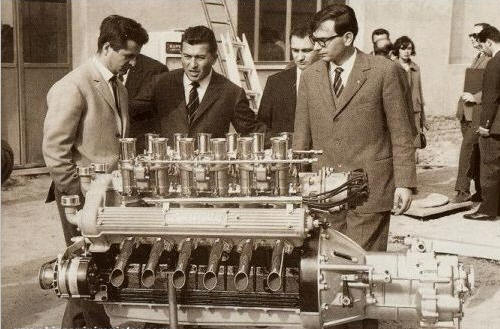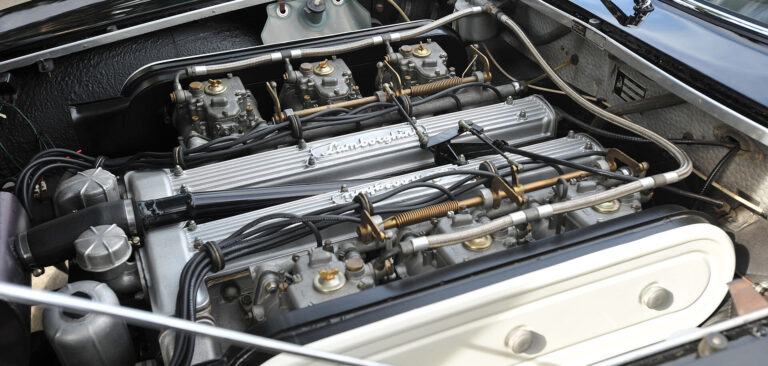Lamborghini this week joined the string of manufacturers currently outlining their approaches to decarbonizing their vehicle fleets. True to the style of the exuberant Italian marque, not for them a bland title like Aston Martin’s Project Horizon or VW’s Accelerate. It has opted for ‘Direzione Cor Tauri’, which translates as ‘Toward Cor Tauri’, in reference to the brightest star in the Taurus constellation.
The company has laid out a three-stage process leading to 2030, which will see the steady electrification of its range, via PHEVs to BEVs. The reality is that any pure EV Lamborghini will inevitably be based on the same platform as Audi and Porsche’s offerings – the e-tron and Taycan. This is a shame because, at its very inception as a car manufacturer, Lamborghini pushed the boundaries of road-car powertrains.
Thankfully, when outlining its new direction the company said that the next couple of years will be a celebration of the IC engine, and the Sant’Agata marque has much to celebrate in its back catalog.
When Ferruccio Lamborghini first set out to produce a GT car in the mid-1960s, he drew on the talents of a trio of engineers: Giampaolo Dallara, Paolo Stanzani and Giotto Bizzarrini. Anyone with a knowledge of motorsport over the last 50 years will instantly recognize at least two of these names, with the first having gone on to found one of the most successful race-car constructors in the world.
However, it was Bizzarrini who laid the foundations of an engine that would become synonymous with Lamborghini: the quad-cam V12. When he joined Lamborghini, he had already designed a diminutive, short-stroke, four-cam V12 engine for Ferrari, which was to have been used in the 1.5-liter Grand Prix formula, but never raced. Lamborghini asked if Bizzarrini could enlarge the design to three liters, matching Ferrari’s then-current offering (and one-upping it, as Maranello’s engine was still only a twin cam). Bizzarrini apparently replied, “I’ll make it bigger and more powerful”, and even agreed to not receive payment until his confidence was proved on the dyno.

The result, which ran for the first time in May 1963, was a V12 displacing just shy of 3.5 liters, producing up to 370bhp at a heady (for the period) 9,500rpm. Sporting a 60° bank angle, it featured two valves per cylinder and a pair of chain-driven cams on each cylinder bank. Advanced for its time, its cast-alloy crankcase housed a seven-bearing billet-steel crank, supporting forged-steel rods and light alloy forged pistons. Induction was via vertically mounted, 36mm Weber carburetors – as was standard racing practice for the day – and power was transferred to the road through a 5-speed synchromesh transmission coupled to a limited-slip differential on the rear axle.
With the race-bred prototype completed, Bizzarrini left Lamborghini’s employment and production of components began. Though it was every inch a racing engine, Lamborghini had no intention of entering motorsport, viewing cars of the time that did double duty on track and road as compromised. This approach would stick with the company through its many changes of ownership, and it never embraced competition in the way its fellow Italian brands did.
The initial, raw V12 did appear in the first Lamborghini produced, the 350 GTV, but the car was unrefined and met with a less than enthusiastic welcome at the 1963 Turin motor show. The entire package needed fettling, and so it was, reappearing five months later as the 350 GT.
The task of calming the engine was given to Dallara. Out went the dry sump lubrication system, and side-draft 40mm Webers replaced the downdraft units (the move to a wet sump raised the engine height, necessitating this change to accommodate an air cleaner assembly). Other detail changes included moving the distributors to a more accessible location and, notably, the compression ratio was dropped from 11 to 9.5:1. In detuned form, the V12 was rated at 270bhp and the revised 350 GT, when it debuted in 1964 at Geneva, proved an instant hit.
That original V12 would go through a host of evolutions over the years, eventually growing to 6.5 liters and well over 650bhp, but the underlying architecture would remain unchanged for nearly 50 years. It was only usurped under VAG’s ownership and distant relatives of Bizzarrini’s V12 were still rolling out of the factory in 2010.
Lamborghini does indeed have much to celebrate when it comes to IC engines. Flamboyant tag lines aside, I would be mightily surprised if whatever electric platform underpins its first EV model is anywhere near as long lived as that first V12.



